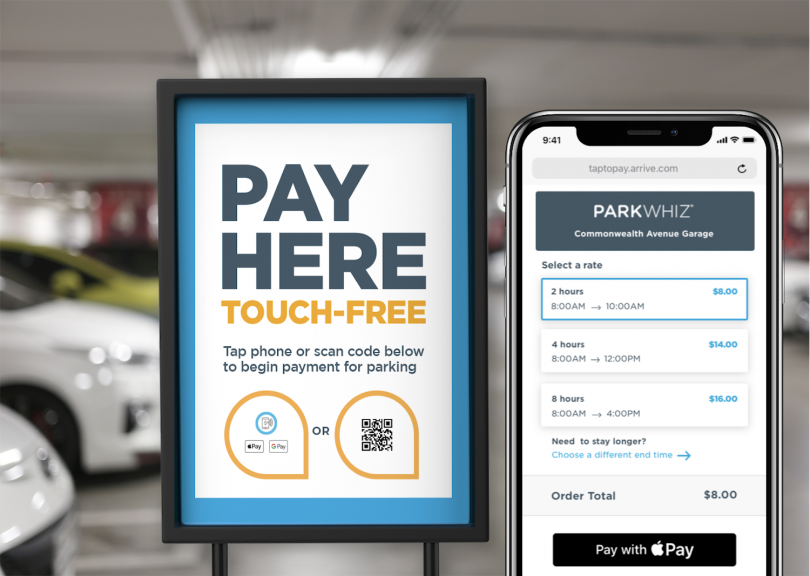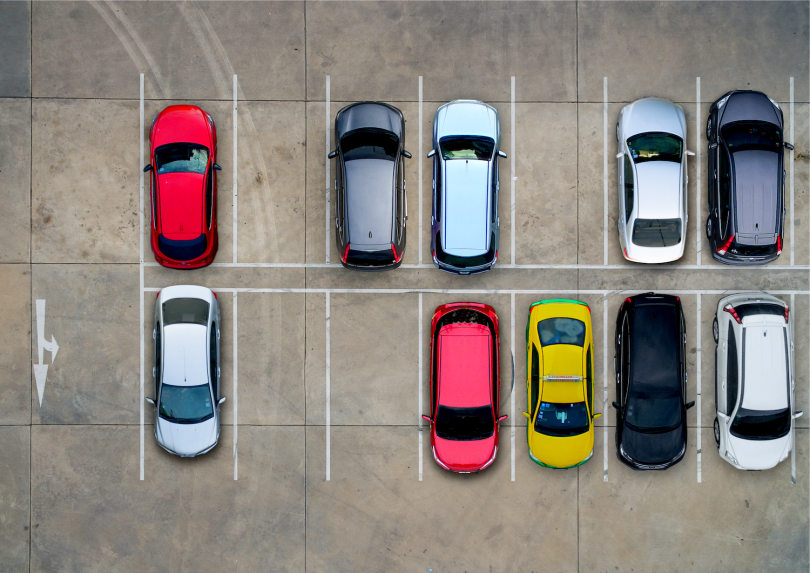This article was originally published on Built In.
It’s Saturday afternoon and you’re running late for an appointment. You pull off a busy downtown street into an open parking garage.
When you approach the kiosk near the gate and swipe your card, the magnetic stripe doesn’t read. What you desperately want is for the gate to open, but of course, it doesn’t. Your credit card is irredeemably scratched.
You tap the “help” button on the kiosk. Crickets. That’s when you glance in your rearview mirror and feel the muscles and tendons in your neck start to tense. There’s a growing line of cars behind you. They’re starting to honk.
“It’s stressful, right?” said Matt Perille, head of growth at the Chicago-based parking technology provider Arrive. “I mean, I’m in the industry and I still feel a little stressed when I’m pulling up to a garage, especially if there are cars coming in behind me.”
That might be something of an understatement. As Perille told me, a parking garage transaction is the ultimate use case for user experience design. Get it right and no one even thinks about it. Get it wrong and you ruin someone’s day.
For companies like Arrive, SpotHero, and Flowbird, who have developed apps and APIs to streamline the parking reservation and payment process, it is the type of time-sensitive, high-stakes scenario that will become ever-more important to solve as software becomes increasingly enmeshed in the built environment.
In cities like Las Vegas, touchless payment is taking hold as a preferred payment option. Earlier this summer, Arrive partnered with Flowbird to release a tap-to-pay app and browser-based feature in the city’s downtown area.
“Most of the payment options we present to people take time…. This takes hardly any time at all.”
Using the tap-to-pay service, a driver can pull up to a parking garage or available street-level spot, scan an NFC tag or QR code with a smartphone and complete the transaction with or without an app. Payment is handled by Apple Pay, Google Pay, or via credit card.
“I think it makes it a lot easier for people to pay,” said Brandy Stanley, parking services manager for the city of Las Vegas. “Most of the payment options we present to people take time. You have to use your credit card or coins at a meter, or you have to download an app. This takes hardly any time at all.”
One benefit, she said, is reducing customer complaints about violations.“ [People] will contact us if they get a parking citation because the technology we presented them doesn’t work. And we have gotten none of those requests with regards to the QR code and the NFC tag,” Stanley said.
Perhaps more surprisingly, the service is boosting city revenue. In 2011, according to Stanley, the department’s total revenue amounted to $4.5 million, with $3 million coming from citations. Now it’s $15 million, with $3 million coming from citations. Making it easier to pay through a mobile app and, more recently, a browser-based option has convinced more people to pay to park legally.
To be clear, the city is writing fewer tickets, but it is also changing the behavior of scofflaws, who previously flouted parking regulations but went unpenalized due to the high costs of street-level enforcement. Thus, overall revenue is increasing.
And parking, of course, is just one way in which smart infrastructure, when coupled with connected devices, is changing how people find and pay for experiences. These days, QR codes and NFC tags (basically a sticker with a circuit) are cropping up everywhere — from restaurants to art museums — and altering how people are engaging with products and their environmental surroundings.
We spoke with Perille and Stanley on how they optimize digital reservations and payment in the wild, where interface design is only a small piece of the customer experience.

Photo: Arrive
Ease Onboarding By Providing Multiple Paths To Payment
If you’re a tech-savvy person who drives in a major city, you probably already have a parking app — or several — on your phone. But for most people, app-based parking reservation is actually quite rare, Stanley said. In Las Vegas, 90 percent of customers still pay for parking using on-street meters.
“Mobile payments and all those kinds of arm’s length transactions have struggled to gain traction in the parking industry for 15 years,” she said. “The mindset of the American consumer is, ‘I’m going to get there, and then I’m going to park.’ The only time we’ve been able to get any movement at scale is during events.”
“So far, what we’re seeing consistently is a three-to-one transaction ratio in favor of the QR code and NFC tags.”
However, since the Las Vegas Parking Services department installed NFC tags and QR codes on existing meters and lot kiosks — an improvement project that involved adhering coded stickers to 250 parking meter signs, 30 surface lot signs, and seven parking garage kiosks — there has been a noticeable shift in consumer behavior.
The gist is that people are paying for parking services digitally at a greater frequency than before. Interestingly, though, few are relying on the Flowbird app to do it; they are using Arrive’s browser-based option.
“So far, what we’re seeing consistently is a three-to-one transaction ratio in favor of the QR code and NFC tags,” Stanley said. “And I would expect that to remain the same once everything opens back up and the coronavirus is in the rearview mirror.”
Retrofitting existing infrastructure with the coded stickers is far less expensive than you might think. For the city, the total cost of the project, labor included, was just $6,700.

Photo: Shutterstock
Adopt an Api-First Mentality
Perille refers to Arrive as an “API-first” company, meaning the company places emphasis on software conventions and data formats ahead of the devices used to service them.
In a splintered industry characterized by both public and privately-owned infrastructure; legions of equipment manufacturers; digital and analog payment options; and a patchwork of rules governing ticketing, validation, and hourly rate requirements, that approach has several advantages, Perille told me.
“Ultimately, we’re looking to build the worldwide API for parking.”
The main one is this: Providing a universal solution for parking is all but impossible inside a single app. But by embedding its API inside other apps and devices, Arrive can grow its user base by proxy and expand its territorial reach.
“Ultimately, we’re looking to build the worldwide API for parking,” Perille said.
The strategy appears to be working. Though Arrive may not be a household name, it has quietly amassed millions of customers and it now operates in every major U.S. city, with significant presences in New York and Chicago. Over 40 million people have used its technology. Recently, Arrive acquired sPark, a Tel Aviv-based company with claims to a recommendation engine that uses traffic and on-street parking occupancy data to provide real-time parking suggestions, and a second Tel Aviv-based company, the mobile payment platform CodiPark, to facilitate drive-up transactions.
Ticketmaster is another marquee partner. If you purchase a ticket for a White Sox game at Guaranteed Rate Field — or any one of hundreds of venues Arrive works with across the country — parking options will appear during checkout under the “Add to Cart” button.
“So,leveraging our APIs, it will return parking options to Ticketmaster that then services those to customers, so you can have that one-click addition of parking,” Perille said.
Ultimately, “last-mile” systems that conceive of user experiences holistically will chart the course for future mobility services, Perille said. Beyond facilitating payment for a meal or parking spot, an ecosystem of connected devices will act as your quasi-concierge for an entire evening.
Say you have a date night planned. You’re going to see a ballet. The software will show you available seats and ticket prices, present options for pre-game tapas and cocktails, and reveal parking options at all destinations.
Eventually, though, if Perille’s predictions hold true, parking will require little foresight on the part of the user, because it will be serviced on demand through personalized recommendation engines. Options will be there when you need them, in other words, materializing as if by some kind of invisible sixth sense.
“So whether you’re going to an event, going out to dinner, or just typing an address into your favorite maps application, we think that’s where parking should be surfaced. And that’s where the transaction should happen,” Perille said.






